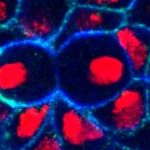Link to Pubmed [PMID] – 22038940
Dev. Dyn. 2012 Jan;241(1):92-106
Since the launch of the raft hypothesis in 1997, data generated in liposomes and cultured cells have highlighted the role of glycosphingolipids (GSLs) in the dynamic organization of biological membranes and the activity of signaling complexes. In parallel studies, genetic analysis of the GSL synthetic pathway has begun to reveal some of the specific roles of GSLs in vivo. Here, we review the role of GSLs in signaling in the context of a refined raft hypothesis. Recent genetic studies in worms, flies, and mice give us the opportunity to integrate these in vivo data with earlier in vitro liposome studies.

